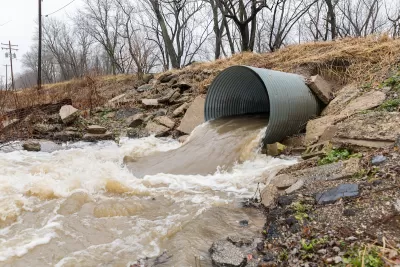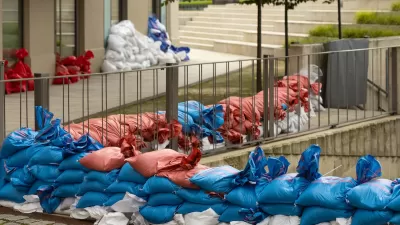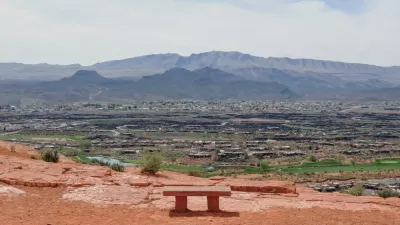A water main breaks somewhere in the United States every two minutes, according to an estimate from the American Society of Civil Engineers.

Climate events are putting water infrastructure across the American South at risk, write Jonathan Fisk, John C. Morris, and Megan E. Heim LaFrombois in The Conversation.
According to the authors, “The American Society of Civil Engineers’ U.S. Infrastructure Report Card in 2021 estimated that a water main breaks every two minutes somewhere in the U.S., losing 6 billion gallons of treated water a day.” Meanwhile, the engineers gave U.S. flood protection infrastructure a D grade.
The American Society of Civil Engineers in 2021 estimated the difference between infrastructure investments of all types needed over the decade of the 2020s ($5.9 trillion) and infrastructure work planned and funded ($3.3 trillion) was $2.6 trillion. It expects the annual gap for just drinking water and wastewater investment to be $434 billion by 2029.
The authors note that because water issues are managed by different agencies and levels of government, “That can put different government agencies into conflict as disputes develop over regulatory control and responsibility, particularly between federal, state and local governments.”
The article points out that federal funding from the Bipartisan Infrastructure Law and Inflation Reduction Act is not enough to cover the spending gap facing many small and low-income communities. “Local communities, states and federal agencies need to reexamine the growing threats from aging infrastructure in a warming world and find new solutions.”
FULL STORY: The South’s aging water infrastructure is getting pounded by climate change – fixing it is also a struggle

Study: Maui’s Plan to Convert Vacation Rentals to Long-Term Housing Could Cause Nearly $1 Billion Economic Loss
The plan would reduce visitor accommodation by 25,% resulting in 1,900 jobs lost.

North Texas Transit Leaders Tout Benefits of TOD for Growing Region
At a summit focused on transit-oriented development, policymakers discussed how North Texas’ expanded light rail system can serve as a tool for economic growth.

Using Old Oil and Gas Wells for Green Energy Storage
Penn State researchers have found that repurposing abandoned oil and gas wells for geothermal-assisted compressed-air energy storage can boost efficiency, reduce environmental risks, and support clean energy and job transitions.

Private Donations Propel Early Restoration of Palisades Playground
Los Angeles has secured over $1.3 million in private funding to restore the Pacific Palisades playground months ahead of schedule, creating a modern, accessible space that supports community healing after recent wildfires.

From Blight to Benefit: Early Results From California’s Equitable Cleanup Program
The Equitable Community Revitalization Grant (ECRG) program is reshaping brownfield redevelopment by prioritizing projects in low-income and environmental justice communities, emphasizing equity, transparency, and community benefits.

Planting Relief: Tackling Las Vegas Heat One Tree at a Time
Nevada Plants, a Las Vegas-based nonprofit, is combating the city’s extreme urban heat by giving away trees to residents in underserved neighborhoods, promoting shade, sustainability, and community health.
Urban Design for Planners 1: Software Tools
This six-course series explores essential urban design concepts using open source software and equips planners with the tools they need to participate fully in the urban design process.
Planning for Universal Design
Learn the tools for implementing Universal Design in planning regulations.
Ascent Environmental
Borough of Carlisle
Institute for Housing and Urban Development Studies (IHS)
City of Grandview
Harvard GSD Executive Education
Toledo-Lucas County Plan Commissions
Salt Lake City
NYU Wagner Graduate School of Public Service





























